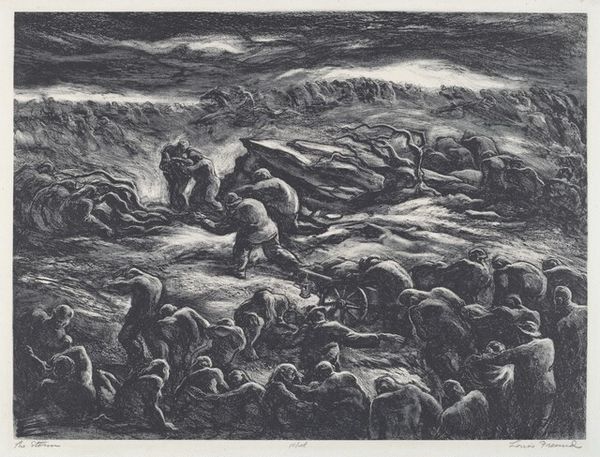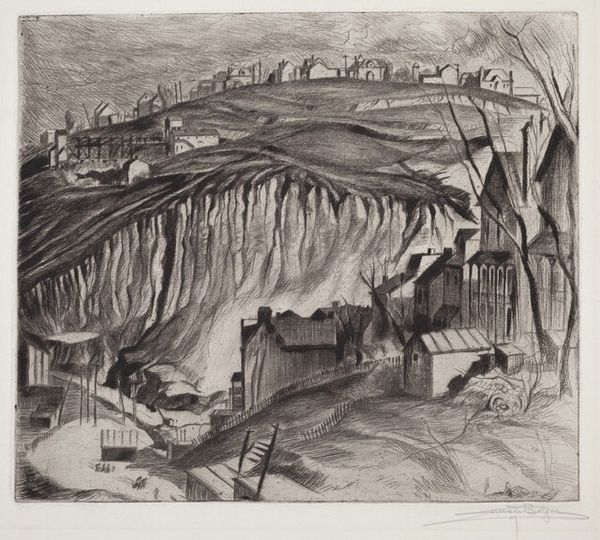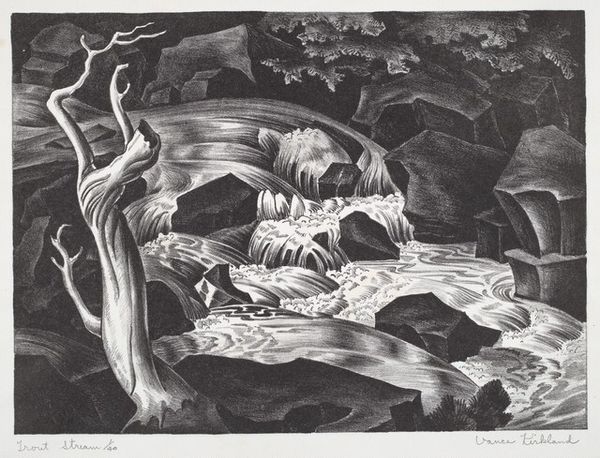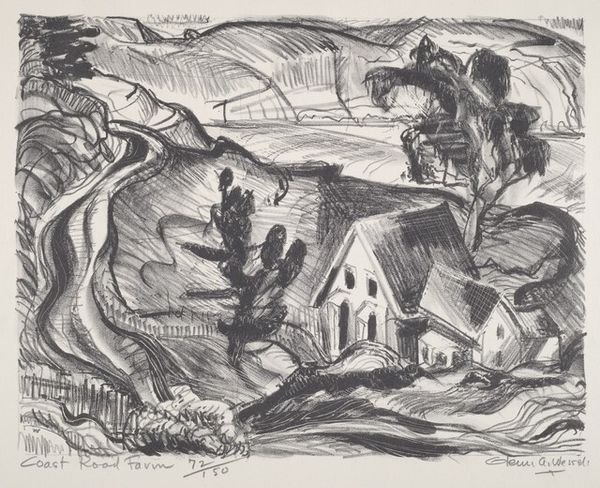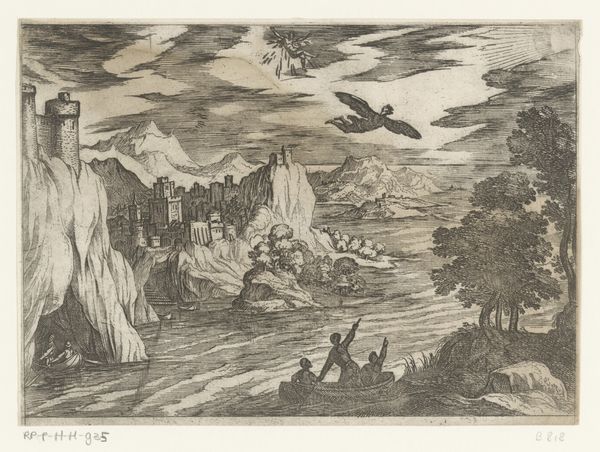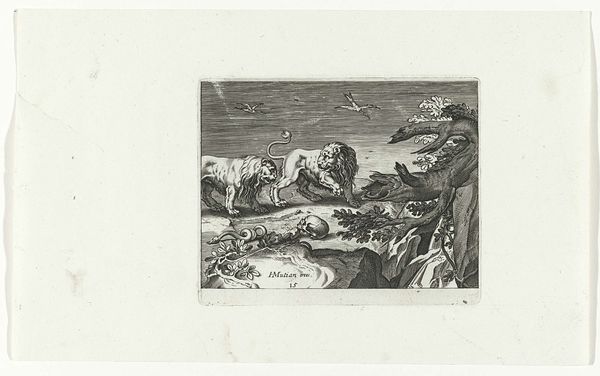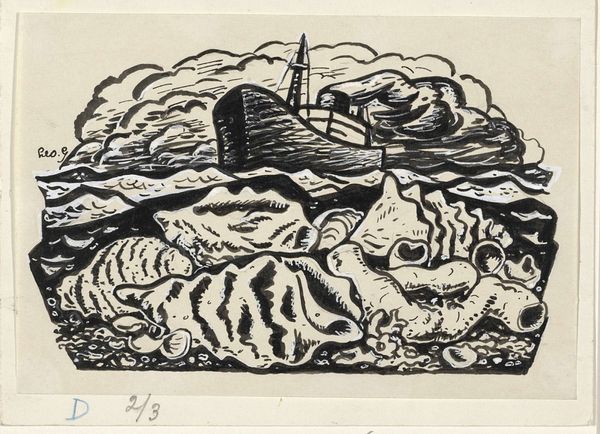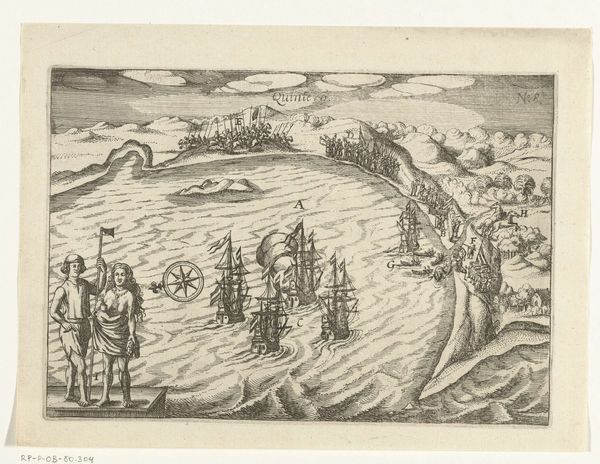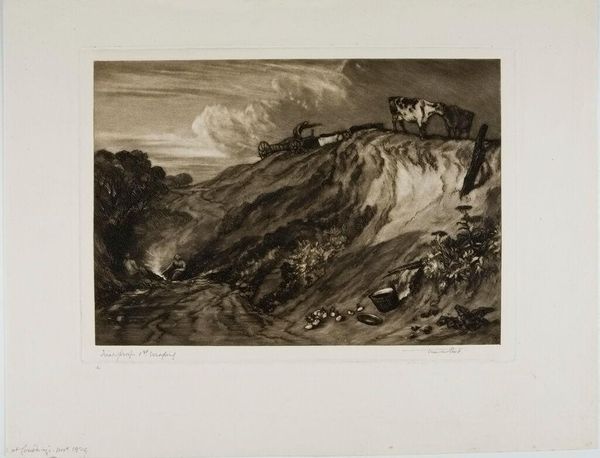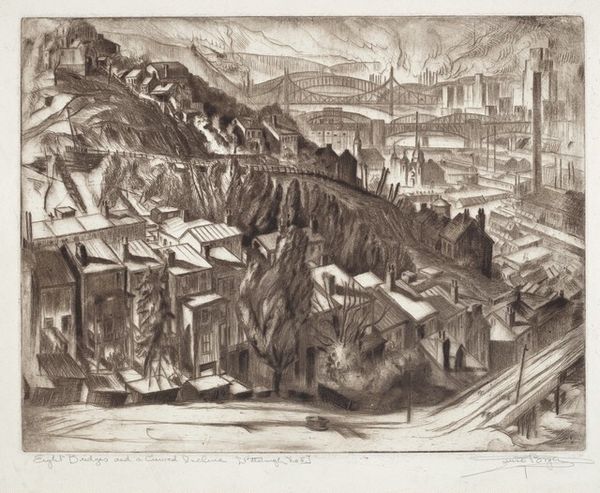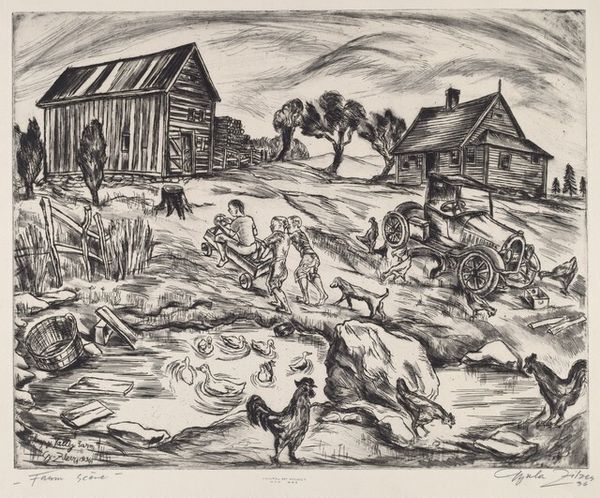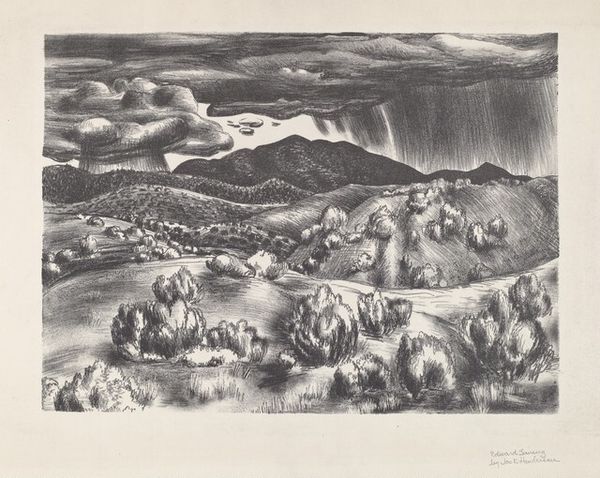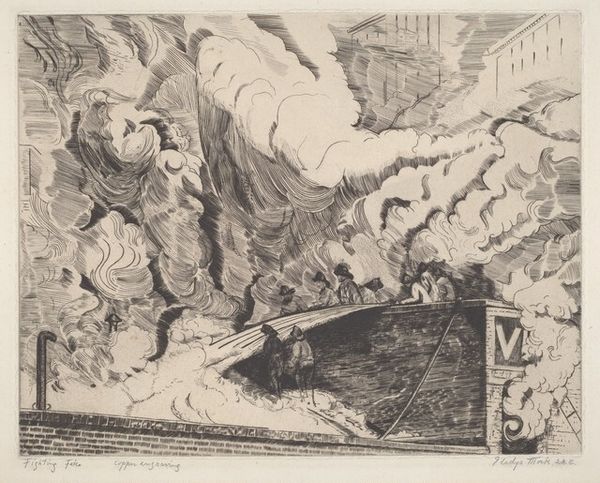
print, woodcut
# print
#
landscape
#
woodcut
Dimensions: 9 5/16 x 13 in. (23.65 x 33.02 cm) (image)12 1/4 x 15 15/16 in. (31.12 x 40.48 cm) (sheet)
Copyright: No Copyright - United States
Curator: Wanda Gág's "Abandoned Quarry II," created in 1944, is a compelling woodcut currently housed at the Minneapolis Institute of Art. Editor: It has this almost desolate, ghost-town feeling. Stark blacks and whites—high contrast that really emphasizes the textures of the landscape. What's striking is that it feels simultaneously abandoned, yet heavy with past lives and labor. Curator: Absolutely. It's important to remember this piece emerged during the height of World War II. Gág's choice of an "abandoned quarry" perhaps subtly critiques capitalist extraction and the war-time mentality that often prioritizes progress over human and environmental well-being. Abandonment, here, becomes a charged state, filled with social and political implications. Editor: Visually, the recurring motifs are simple gabled huts that suggest rudimentary shelters. Even if it's "abandoned," are they dwellings or, in this moment in history, refuge? And I wonder how the landscape elements interact— the dark skies, winding paths. Are they representative of struggle, transition, perhaps the darkness of those times? Curator: Yes, the huts suggest the potential dispossession experienced by transient labor. They speak volumes about marginalization during a tumultuous period. Even her treatment of natural forms can be read critically. For example, are we seeing exploitation or resilience in that landscape? How does Gág subtly highlight how humans impose themselves and interact with the natural world, especially at a time of deep social upheaval? Editor: The quarry itself could also be interpreted on many symbolic levels. The scarring on the land hints at the hidden human stories of extraction and industry but also something more enduring: endurance. And I love that the dramatic composition, a testament to nature reclaiming what was once taken. It also strikes me that black and white itself is a visual synecdoche for polarity: good and bad, absence and presence, devastation and regeneration. Curator: Your attention to symbolism helps us navigate this rich text! Gág challenges us to rethink accepted visual representations of the land—what should we extract or take from a place? Where and how does the community fit into this? Perhaps art can function as a crucial lens. Editor: Agreed, it helps decode what these spaces tell us, especially at given times and from marginalized perspectives. I have a greater appreciation now for the work's visual density and the layers of social and political commentary contained within a landscape we can easily miss in a quick glance.
Comments
No comments
Be the first to comment and join the conversation on the ultimate creative platform.

